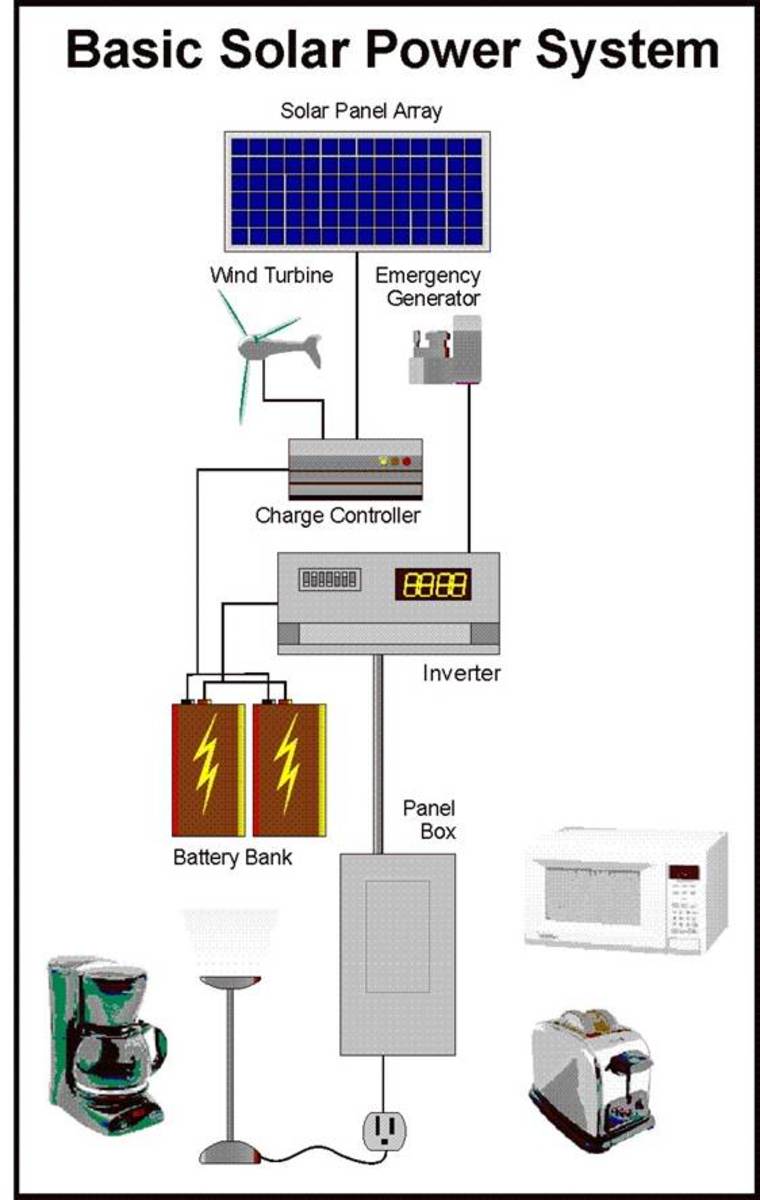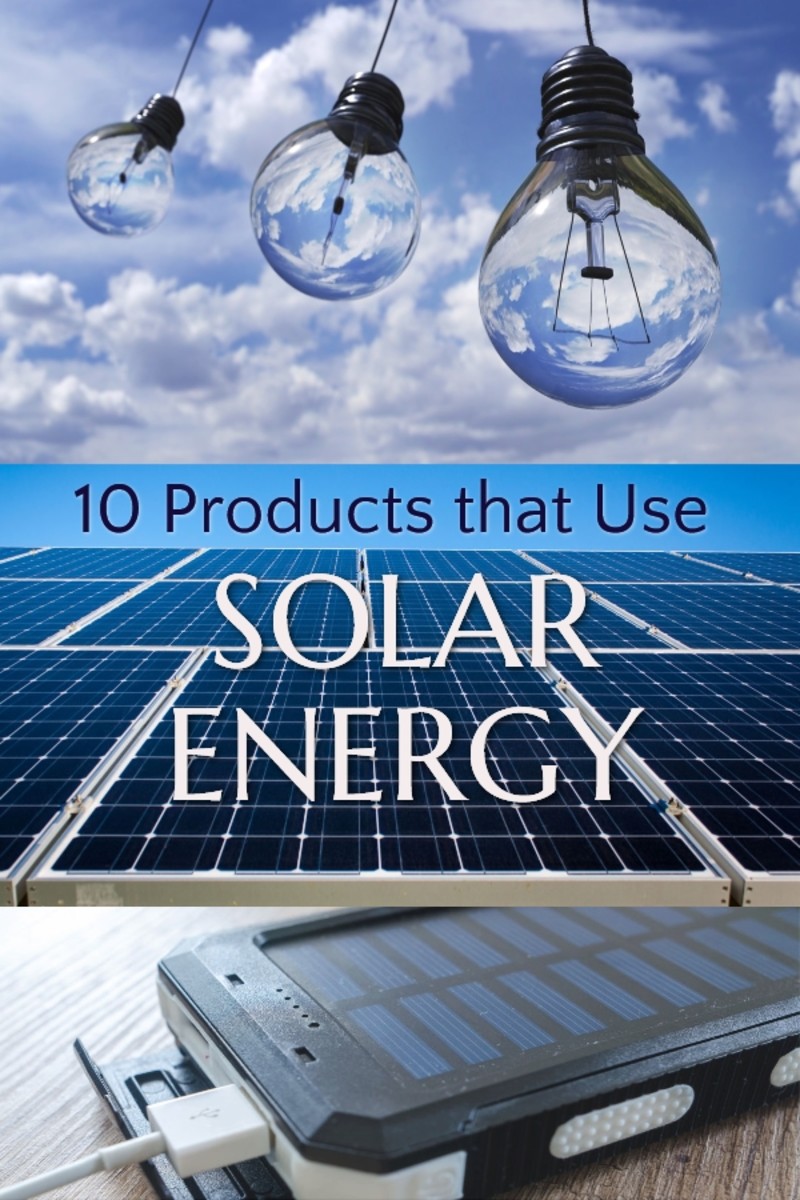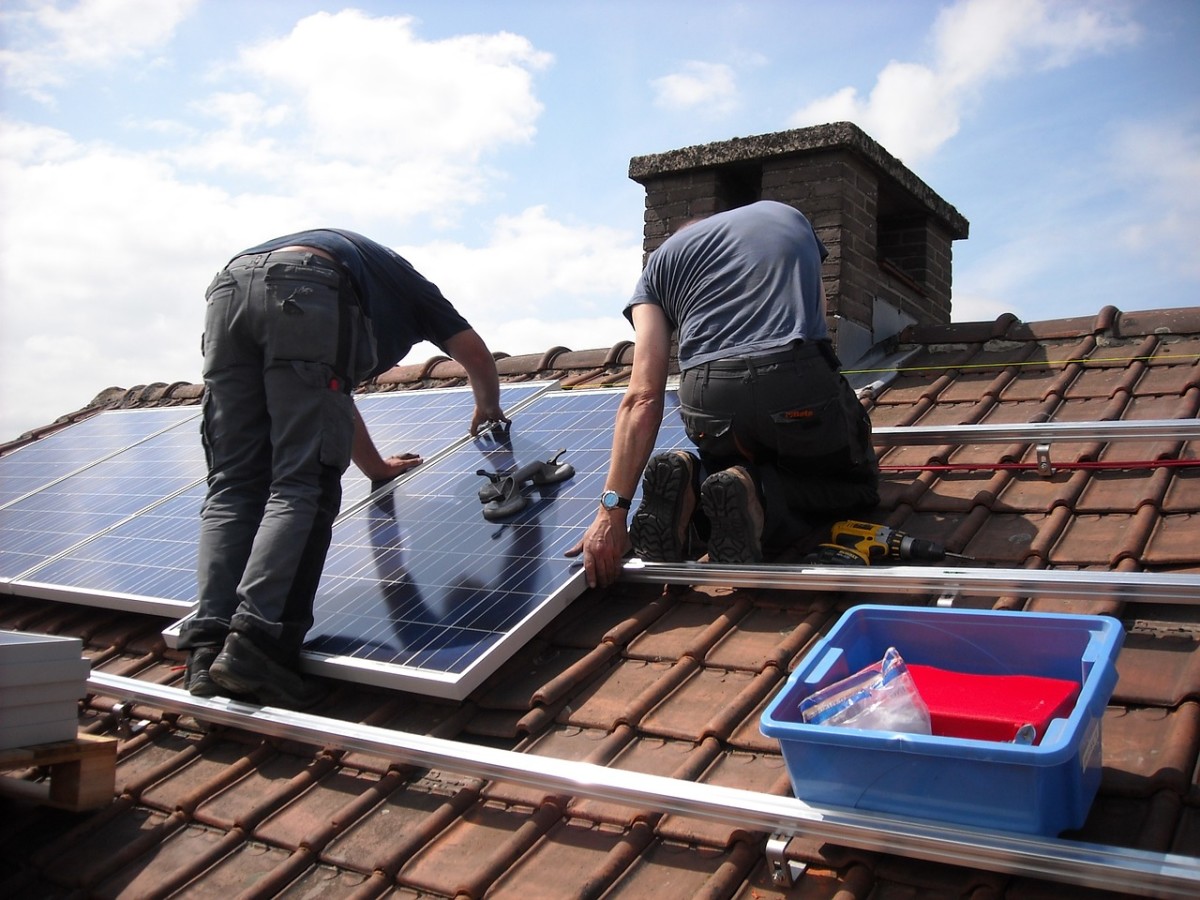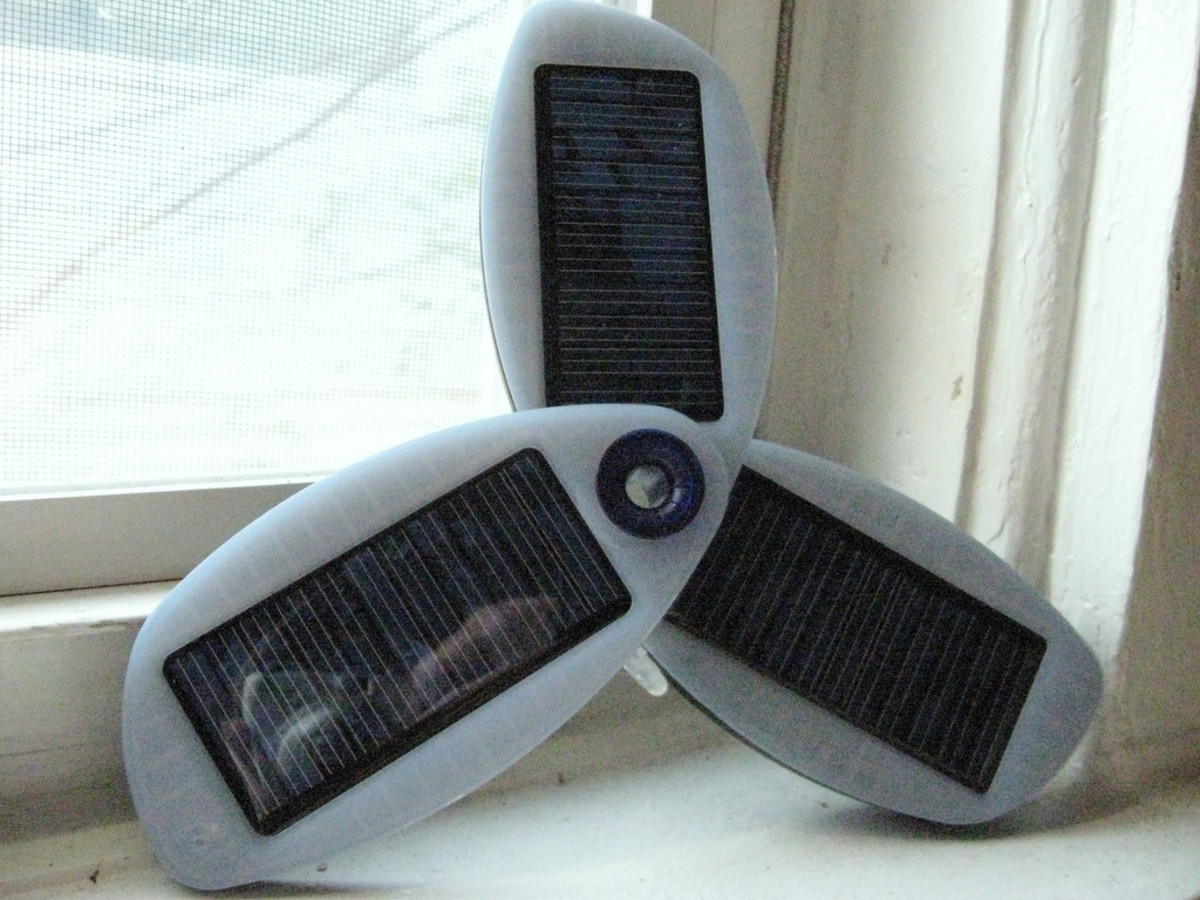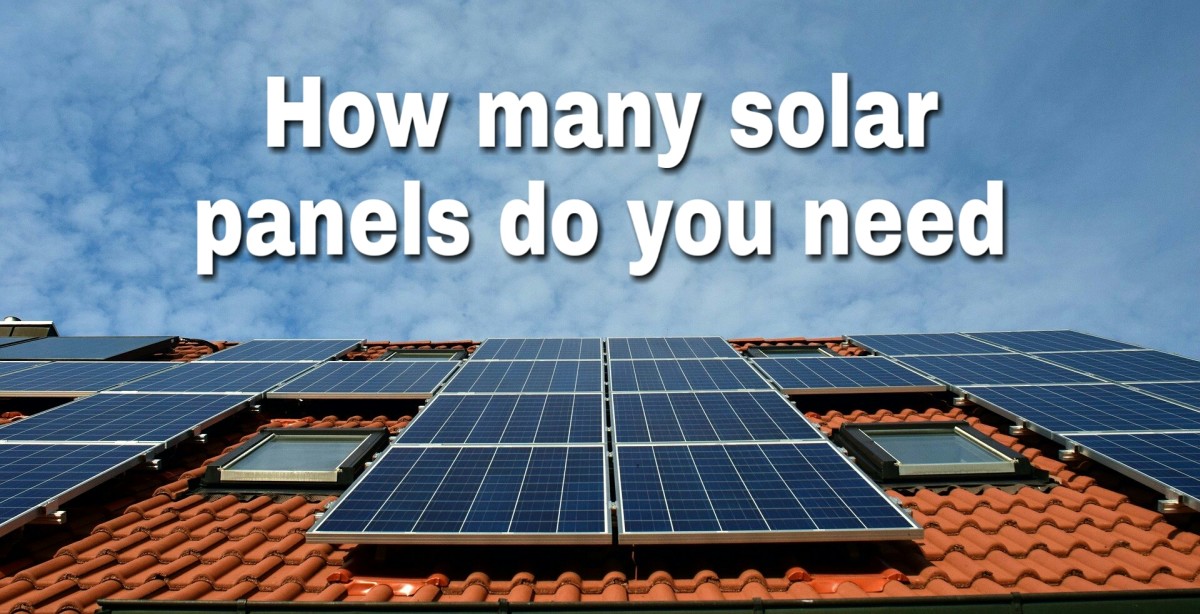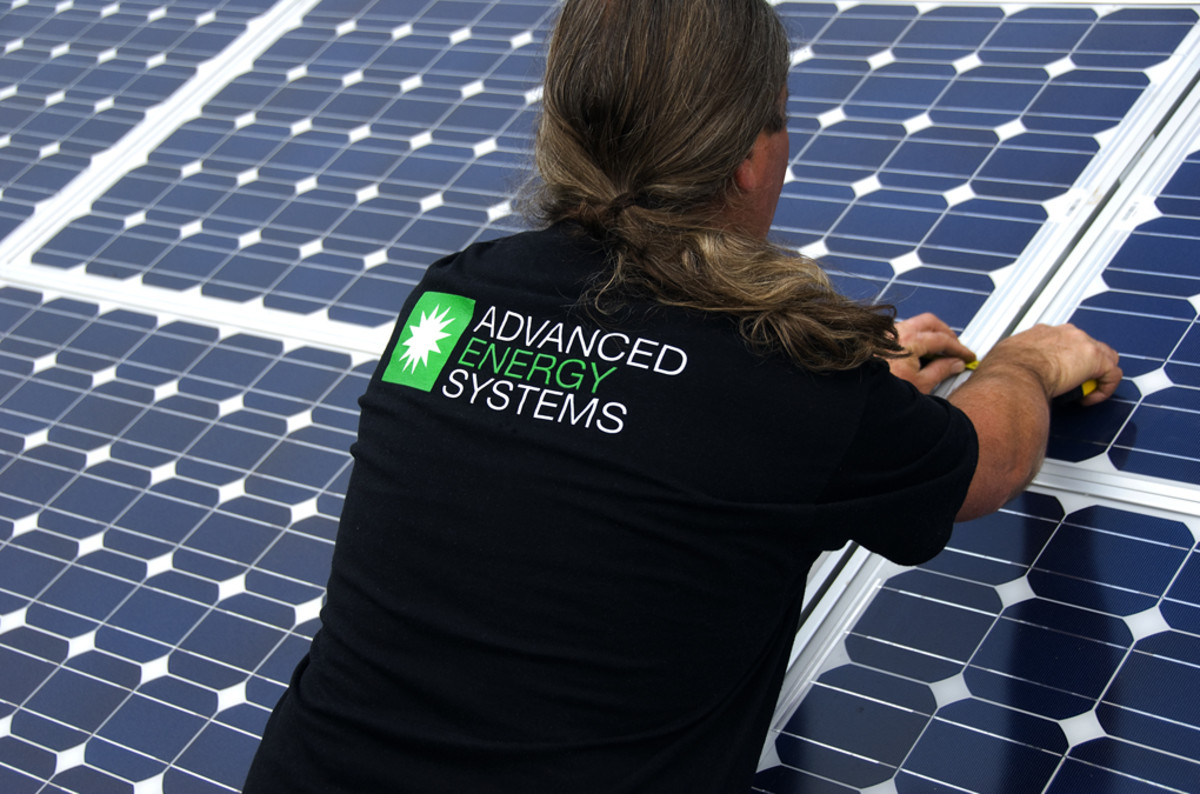Green Power
Rural Solar
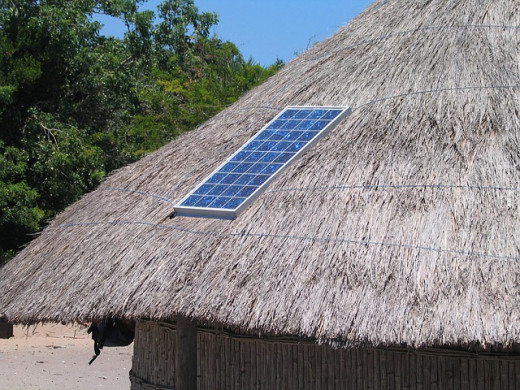
Solar panels
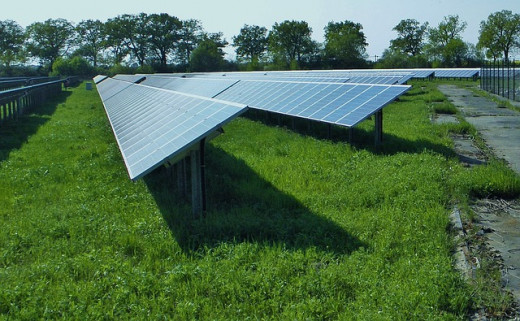
Homemade Windmill from car generator
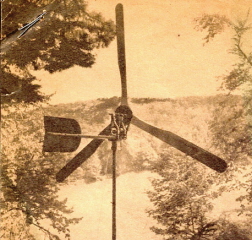
I believe that a hybrid *Micro-hydro, Solar, and wind power solution for home power users could be the answer to allow most energy consumers to produce their own free power, and with little change in their current consumption patterns. I don't believe that the only way to go green, and end your power bill is to end the lifestyle that we are accustomed to, but I do believe in some improvements to the way we use our energy. One main reason to conserve as I see it would be to reduce the cost to install your power production system to begin with. I have seen examples of micro-hydro power generation that can produce enough power to energize 3 average homes which use power without conservation measures, of course they could probably serve six or seven homes that were using smart methods to improve their energy use footprint, while maintaining a comfortable average lifestyle. A micro-hydro power system can work without a river or stream nearby. The main thing that is needed for micro-hydro power is a change in elevation from where you place a water reservoir, and where you place your mini-turbine. There are models available for purchase that will run on as low as (10)ten feet of grade / elevation change. The system I was most impressed with had a property that was rural, and was part way down a hillside. They had natural run off from the adjoining property above them that would otherwise have to be sent through a ditch line or drainage system to keep it from washing across their building site. Rather that just channel this water around their property and building site. They decided to put it to work first. On the high side of the property just inside the property line, they created a pit with pond liner, and what looked like a traditional drain field with rows of perforated pipe all tied together into one common non-perforated pipe. This was then all covered over with drain-field (River rock) to just below finish grade. They later planned to cover it with landscaping/silt cloth and sandy loam soil that would allow water to flow through when it ran down from the adjoining property above. When it rained outside, and water flowed onto their property it found itself running into this pond/drain-field. As it filled gravity began to carry it through the perforated pipe, and into the common non-perforated pipe. The non-perforated pipe ran slightly downhill, and into a large underground reservoir or cistern that they had constructed. This reservoir was being filled anytime that it rained outside. There was a pipe to carry water by gravity from the bottom of this reservoir downhill to their building site. At the building site they placed a small roughly 5'x5' shed. At this shed the pipe came back out of the ground up into the shed. Inside the shed they had a small turbine that had what looked like a modified car alternator hooked to it. This was their micro-hydro-turbine. Out of the turbine another pipe took the exiting water back underground, and down-hill to their low side property line where it was ran through more perforated pipe in a traditional type drain-field which allowed the water to escape back to the ground to follow its otherwise natural downhill path as it would have done before after crossing their property. This little power station produced around three houses worth of power under normal / non-conserving methods, and more homes could be served if they were of the efficient type. I believe that a system like this could add a lower reservoir to hold water, and a wind powered water pump that when the wind blew pumped the water back up to the upper reservoir. You could do the same with solar hooked to a water pump. With this system you could greatly reduce the need to store energy in costly battery packs that will need to be replaced eventually. The system would be scalable, allowing you to add on as you can to capture more, and more energy for free. At some point when you have a surplus supply of energy; you could sell some back to others, or the grid if it was nearby. This would help to improve the energy supply for everyone, and reduce the demand on fossil fuel, or carbon based fuels.
Micro-hydro is a small version of the hydroelectric dam.
* Micro-hydro: Micro-hydro is a small home size version of the hydroelectric dam technology. It basically uses the effect of gravity on water that makes it want to go to lower ground, and it uses it to capture energy for use as electricity or other means. These systems can be very cost effective, but do have some limitations on where they can be deployed. If you have an area of land with elevation change as little as ten feet, and the availability of water flow, then you can deploy micro-hydro, but the greater the elevation change and amount of water flow the greater the energy benefit that you will be able to capture.
Geothermal heat pumps are a underutilized bounty of heat energy that has a huge long term payback for your energy consumption footprint.
Geothermal heat-pumps are widely underutilized in the home heating arena. They take advantage of a wealth of natural thermal energy that is virtually available for free in almost every location, but have yet to be as widely deployed as they should given their enormous long term payback in reducing your overall energy consumption footprint. Perhaps like many of the proven green technologies, there is the obstacle of the initial install cost, but when you weigh that against the next 30 years of always growing conventional energy cost both to your wallet, and the environment you can see the clear choice for a superior heating and cooling plan over time is with geothermal. You may ask, What is geothermal, and how does it work? In essence geothermal is the heat energy that is stored in the soil mass of the earth. The soil at a certain depth remains close to the same temperature all year round and by placing some coils of pipe in the ground in and around that layer you can tap into that stored energy. The coils of pipe have a liquid flowing through them that carries the geothermal energy back into you home to a heat pump that then through the use of a heat exchanger utilizes that energy to produce heat in your home, but using the same method you can also create the cooling your home needs on hot days by reversing the process, and sending the heat out from your home through the same liquid filled lines. The whole process is much more efficient than just burning fossil fuels or electricity to perform these tasks. Once the energy has made it to your home heat pump it can be distributed around and through your home in the same way as most conventional heating, and cooling technologies.
You Can Do It! Green Home Power
Everyone can start to go green today. Most people with the ability to use some basic hand tools can build an alternative power source for their home, but there are some steps that you can, and should take first before you ever begin on your path of creating your own power. The step that everyone can, and should do to begin their green power plan is to improve the way they use power in their own home. Become aware of the ways in which you can reduce the power use in your home without reducing your way of life. Start by understanding the ways in which you use power. Find some item that can be changed to improve their consumption. The new Fluorescent energy saver bulbs use about one tenth the power on average as compared to the older incandescent type bulbs and LED bulbs are even more efficient. If you can change ten bulbs in your home from incandescent to fluorescent energy saver type then that would be the same as completely eliminating the power use of one entire power hungry light bulb. Over a year you will find that you have much less energy demand for lighting your home, and in result, you can reduce the size of the future green energy production system that you are planning. As well, if you have any of the square box type power plugs that go to charge cell phones, and power other equipment that may not be in use, but remain plugged in, then put them on a power strip that can be turned off, and on conveniently when needed. They also sell a smart device that runs on a switch that you can place by the door you use to come, and go that will turn off or on many devices within your home as you come or go. You just plug your device into an adapter that plugs into the wall socket, and the adapter controls the power to all your devices from one switch. You can buy more energy efficient equipment when you make purchases to reduce your power use. When you can insulate your home better there is less need for power to heat, and cool. As you become more aware of your energy footprint you can see ways to improve your use. At that point you will be able to move forward with a plan to calculate your true needs for power, and calculate the size, and type of alternative power that you will employ for your home. Start your alternative energy plan by becoming aware of the amount of power that you consume, and a way of improving your use without being in the dark or not being able to enjoy life. I will have more to come, and plan on offering some plans for a home wind generator, a solar tracking panel with a parabolic reflector to increase it's output, and reduce cost, as well as some information on Micro-hydro power generation. I hope to illustrate some hybrid systems that will reduce the need for large battery back up systems. You can use water reservoirs, and the utility grid as a means of energy storage rather than purchasing a large amount of batteries that will eventually end up going bad, and need replaced. Look for more soon.
Some interesting links
- Bate's Car: Sweet as a Nut by Tony Ianzelo - NFB
This short film presents Mr. Bate, an inventor who discovers a substitute for gasoline in barnyard manure. Even though he fits the classic mould of single-minded know-how and practical dreamer, his discovery is tried and tested. He demonstrates how h - Make your own biodiesel: Journey to Forever
Make your own biodiesel step by step. - Put a chicken in your tank
Methane fuel homebrew around 3cents a gallon. Can run your car, or be used to heat water etc. - How to Refurbish a Golf Cart Battery | eHow.com
How to Refurbish a Golf Cart Battery. Most golf carts are equipped with 6 volt lead acid batteries, which are small versions of car batteries. However, batteries in golf carts often don't last as long as they could due to... - Cool home built wind turbine with all info needed to build
How to build a wind generator in your backyard for $150 or less. - Microhydro Electricity Basics
Independently published since 1987, Home Power magazine and HomePower.com are resources dedicated to small-scale renewable energy and sustainable living technologies.

